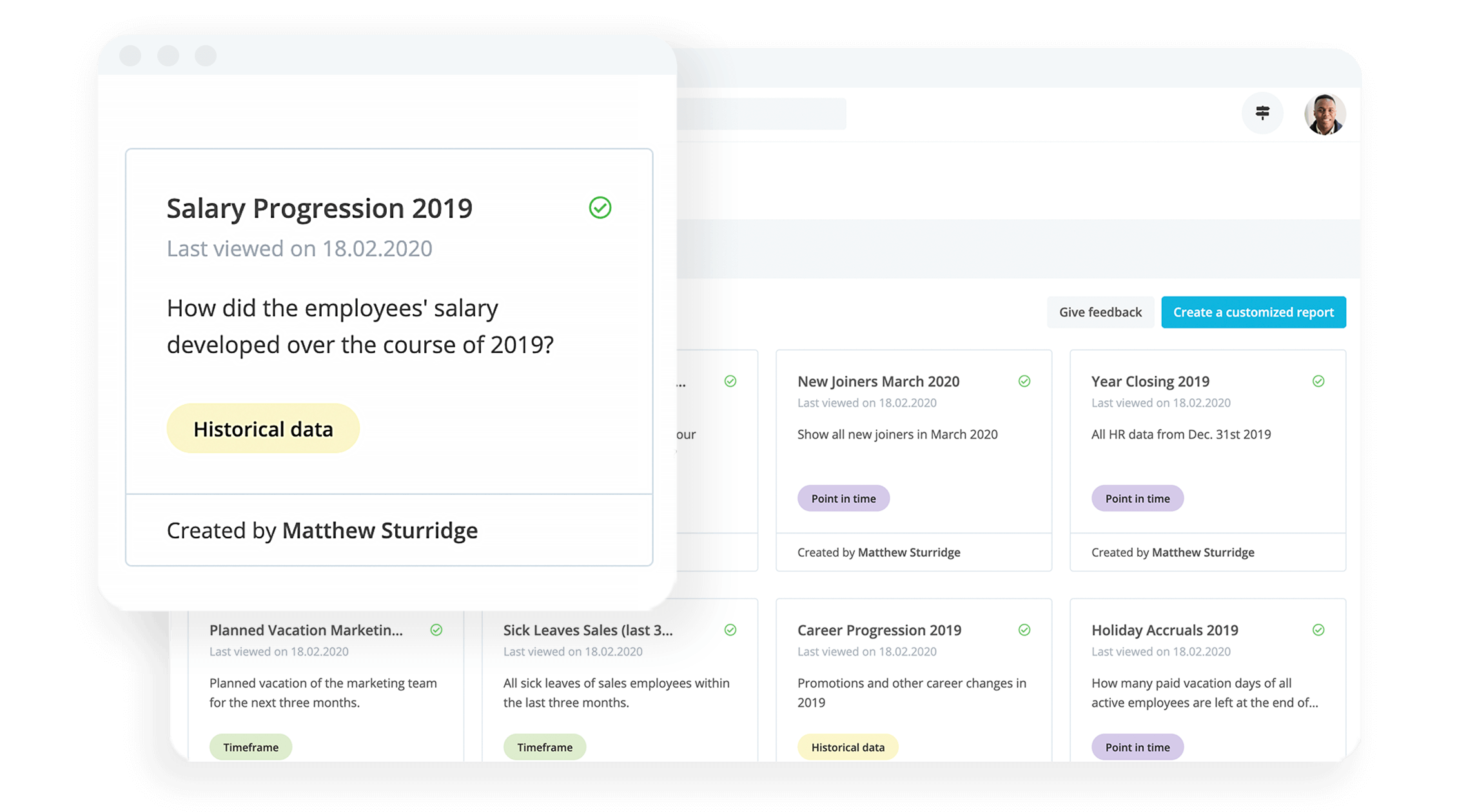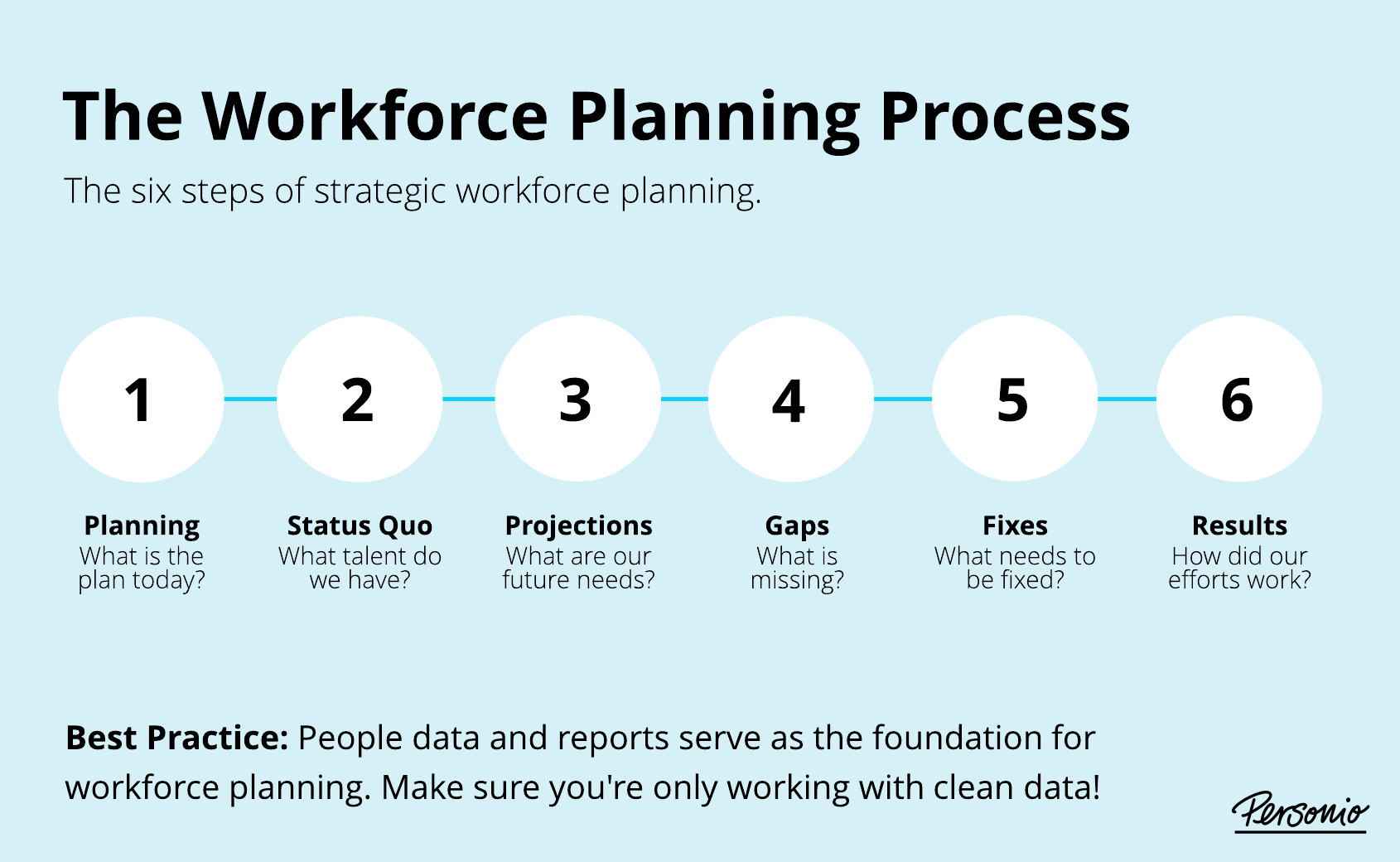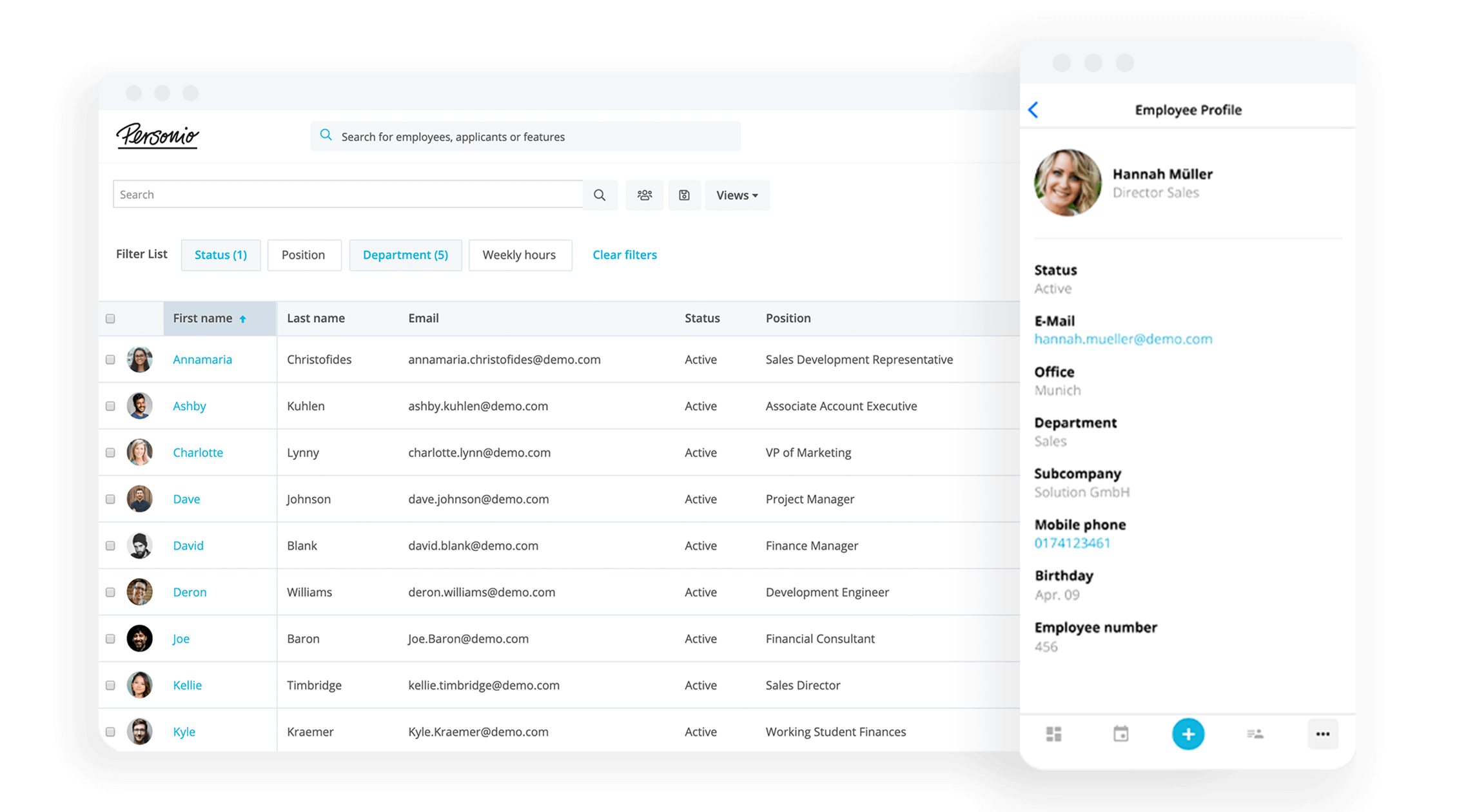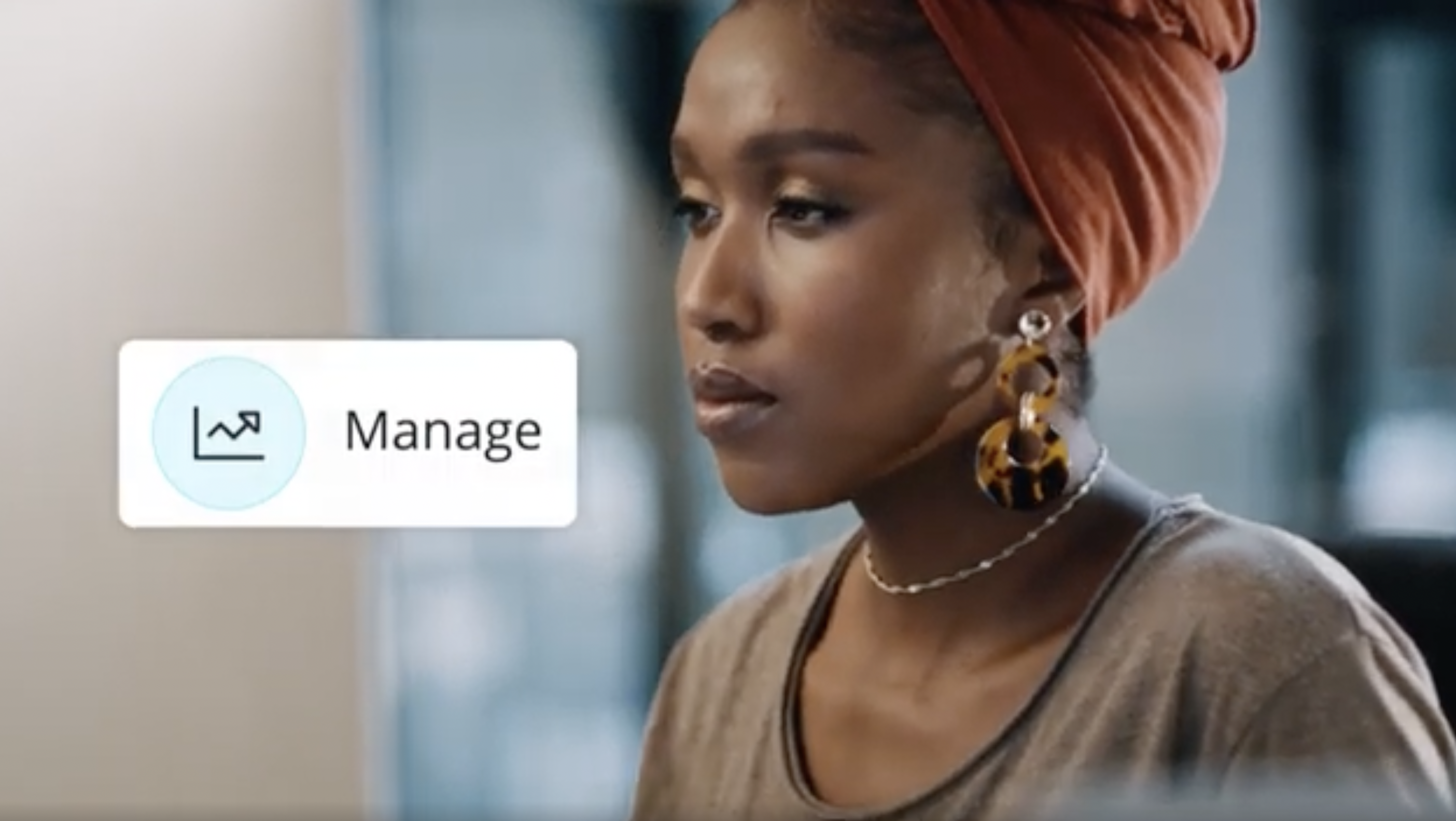
Data-driven HR
Struggling to turn HR data into stories that impress leadership? Our content hub has the answers. 📈
Explore our content hubWorkforce planning: 6 strategic steps in the right direction

The workforce planning process can help answer some of your business’s most pressing questions: Who do you need to employ? Who do you have on hand? How do you keep your top talent around? In this article, we answer each, while providing an actionable guide to strategic workforce planning success.
What is workforce planning?
Workforce planning is the strategic evaluation and management of an organisation's present and future talent requirements. It involves analysing, forecasting and planning workforce supply and demand. The goal is to ensure that organisations have the right people with the right skills in the right places at the right time to drive success.
What is the purpose of workforce planning?
The purpose of workforce planning is to find out whether you have the right people in the right roles. It’s ensuring you have the right number of people, who have the right mix of skills, knowledge and experience to help your organisation reach its goals. These often will include both your short and long-term goals.
What is an example of workforce planning?
Here's an example of workforce planning: Let’s say that your business has ambitions to expand internationally, but your sales staff is centred in one country, in one language and attuned to the needs of one target group.
Planning efforts would involve finding out:
The number of new sales staff you need
The number of languages you want to cover
If those sales staff should be based in other countries
If members of that staff should have certain regional skills or knowledge
A common workforce plan will often include a brief analysis or summary of your current workforce, your future needs, and how you plan to bridge the gap in between.
This might include hiring plans, job architecture, learning and development opportunities, or identifying key hires that are not necessarily related to scaling your business (like a new leader or content specialist).
What is strategic workforce planning?

Strategic workforce planning is designed to meet scenarios three-to-five years in the future. Therefore, it must be aligned with business needs and objectives. It also requires the knowledge and time to prepare a plan that looks at future business strategy and includes scenario planning.
What Is The Workforce Planning Process?
The workforce planning process encompasses:
Step | Description |
|---|---|
Analysis | Analysing your current workforce. |
Projection | Determining the future needs of your workforce. |
Identification | Finding gaps between where you are now and where you want to go. |
Design | Implementing solutions to accomplish your goals. |
Fulfilment | Accomplishing your plan through your top talent. |
Workforce planning might come across as a vague term. Especially when it comes to overall business strategy. But. it has a very straightforward purpose and reasoning behind it.
Plan For Your Future With Data-Led Decisions

Gain access to the a wealth of people analytics you can use for more accurate planning. Automatically generate detailed reports in just one click.
Unlock HR Insights With PersonioWhy is workforce planning important?
In today’s talent-based economy, the key element that keeps successful companies running is people.
But, as the SHRM states: “Despite its importance, this asset is often not carefully planned, measured, or optimised. This means that many organisations are not sufficiently aware of the current or future workforce gaps that will limit the execution of business strategy.”
As anyone who has ever experienced staff shortages will know, not having the right talent in place can cause enormous strain on a business. The professional services and HR consulting firm, Mercer, explains it well: “A weak pipeline or hidden talent issues can shake your organisation’s very foundation before anyone has realised there might be a problem.”
However, if organisations are able to look ahead and plan what roles, skills, and people will be needed to meet their business goals now, and in the future, they are more likely to thrive.
Of course, this is often easier said than done. It involves a systematic, rigorous, and disciplined process combined with a:
Future-forward view of the world
Solid grasp of business strategy
Deep understanding of human talents and capabilities
Strategic, time-conscious, and thoughtful process
Download our guide to discovering solutions for resilient companies today.
Who is in charge of workforce planning?
The short answer: a lot of people! In some organisations, there are a multitude of stakeholders in charge of the workforce planning process (HR, sales leaders, even the CEO). In some, it’s simply a mystery left to the C-suite. But, should it be that way? The responsibilities of workforce planning may reveal to us who truly should be in charge of steering the conversation.
After all, HR teams are the ones doing the majority of the sourcing, vetting, recruiting, and hiring. Being accountable to results like those means having a place at the table. This is most often where strategic human resource management comes into the equation as a tool to enable HR teams to lead conversations on greater workforce planning.
All of this is to say that the responsibilities of workforce planning will vary by organisation. It really depends on the role an HR team has, and whether or not they have been able to reserve their own spot at the table of management.
Do you need workforce planning tools?
Workforce planning tools can help offset some of the uncertainty surrounding workforce planning. That’s because it is an attempt to bridge the gap between where your workforce currently stands, and where it can go.
Check out our article about the top five workforce planning tools you can try today.
The six steps for strategic workforce planning
The workforce planning process can be categorised into six key steps. As an organisation, it helps to sit down and define answers to each of these to try and bring meaning to each.
And, as mentioned before, while HR may drive the conversation, it is imperative that many key stakeholders find themselves a seat at the table. They all should be able to weigh in, in order to align your ‘people plan’ with your business plan.
Check out our guide to aligning your HR’s goals with the company’s goals today.

1. What is the plan?
Where is your business going? Where do you want it to go? What are the current goals of top-level management? Workforce planning needs to start from the top down, and it needs to be set out by some kind of vision or overall goal to work toward. Whether that is doubling headcount or increasing the amount of leaders.
How do you formulate a proper HR strategy, overall? Here’s our guide to the process.
2. Who do we have now?
The next step is to analyse the talent you have on hand. Who do you currently have working for you? What skills or training do they have? What seniority levels do you have a lot of? Take into account everything you currently have, ideally in the form of data and over a period of time to see how you’ve grown to this point.
3. What do we do next?
Think about the space in between your current inventory of talent and your ultimate goal. So, what do you need next? Do you need more people? Different kinds of skills? More leaders? This will begin to inform you in terms of what you should do and what concrete measures you may need to implement.
4. Skill and talent gaps
Let’s dig a bit deeper. If we think about what we need to do next, first we need to think about what’s missing. What are the most pressing talent gaps in your organisation? Which ones would help you reach your goal sooner? For instance, would hiring the perfect high-level executive help to recruit even more mid-level talent? Which gaps, when solved, turn into their own amazing opportunities for growth?
5. Fixes & Initiatives
To address those gaps, what will you do? Will you focus on campus recruiting, formulating a more compelling remuneration package or rewards for top talent? What kind of fixes will help address those gaps, help you take the next in your workforce plan, ultimately to achieve your goal.
6. Measure Results
Did your fixes work? How much closer are you to your goal? Here, analytics and reporting are absolutely essential, as they can track your progress over time against your goal. And, in a click or two, you should be able to have a report that you can use and bring to executive management.
Here’s how to create reports in an instant with Personio.
Centralise Employee Data In One Ultra-Secure Place

Create one single source of truth for all employee data and use it to prepare for your organisation’s future. Know exactly the talent you have on hand at a glance for your workforce planning.
Protected Data With PersonioHow does workforce planning benefit employees?
Mercer puts it this way in their Global Talent Trends Report 2020: “It can’t just be about employee capacity and business unit alignment, [workforce planning] must recognise employees’ potential and engagement and be intertwined with the company’s technology roadmap.”
Sadly, the same report which gathered insights from 7,000+ people from nine industries and 16 regions says that two in five HR leaders say they don’t know what skills they have in their workforce today!
That means that successful workforce planning requires a combination of:
Element | Description |
|---|---|
Vision | Looking ahead to the future of your organisation. |
Planning | Taking steps to best accommodate that future vision. |
Strategy | Concrete measures and initiatives that get you there. |
Humanity | An understanding that people, your talent, will get you there. |
Empathy | A focus on the human qualities of skills, work, and success. |
WATCH: Get to know Personio in three minutes

We need your consent to load this service!
This content is not permitted to load due to trackers that are not disclosed to the visitor.
Start Strategic Workforce Planning With HR Software
Start your workforce planning journey on the right foot with an HR software like Personio. Unlock the power of employee data management, enhanced reporting, and improved decision making. Upgrade your people operations for now and into the future by starting a free trial with Personio today.

